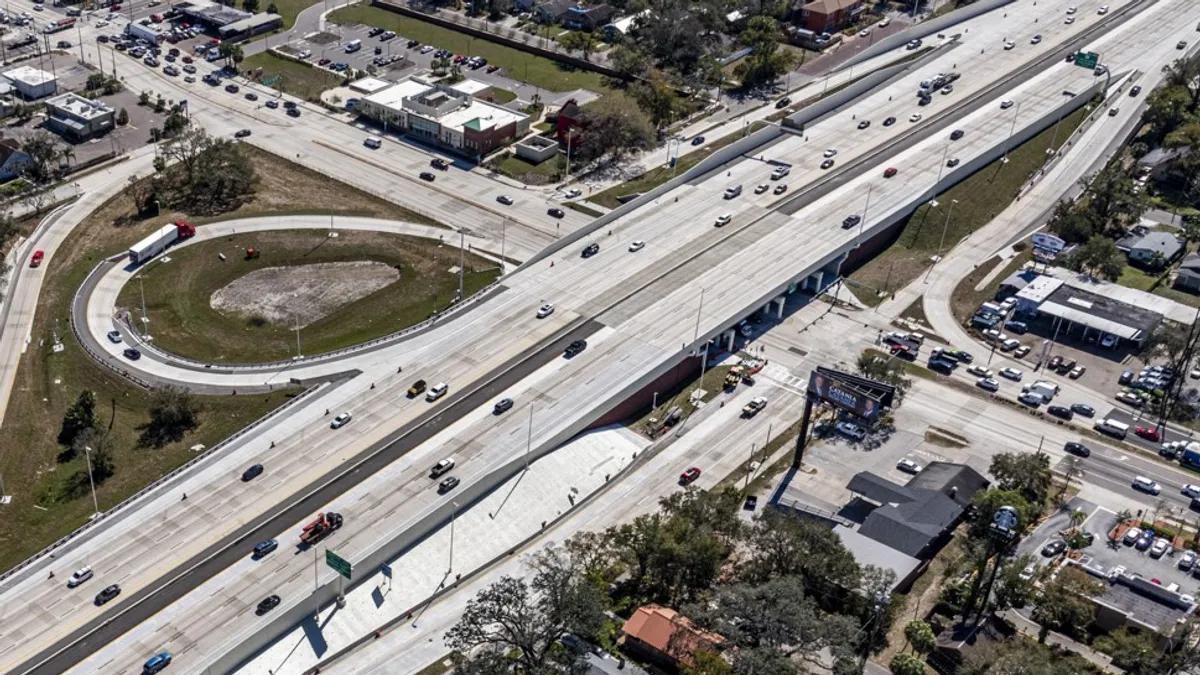Bart Ronan is CEO of Trux, a construction and trucking logistics company. Opinions are the author's own.
With the passage of the historic infrastructure bill, $1.2 trillion will now be leveraged for much-needed improvements nationwide. While specifics are still being debated on how states will fund which projects, it's an opportunity for the industry to reflect: What valuable lessons can we learn from major infrastructure projects over the last century?
There are countless examples of projects that made a notable impact on the country, but three of the most successful ones are:
- The Interstate Highway System
- The Big Dig
- Chesapeake Bay Bridge-Tunnel
Before we put these federal infrastructure funds to work, let's pause and study how these infrastructure projects came to be, the techniques contractors used and the technology they deployed. By taking away critical lessons and applying them to today's market, construction pros can set themselves up for success.
The Interstate Highway System
The Interstate Highway System is considered the "Greatest Public Works Project in History." Funded by the Federal-Aid Highway Act of 1956, it consisted of 41,000 miles of road spanning coast to coast and running through the nation's major cities. Construction began in 1957 and was officially completed in 1992, though it was first slated to be completed by 1972. Congress allotted $25 billion for the project in 1956, but it ended up costing $41 billion, or nearly $417 billion today.
There were several challenges associated with the project:
- Coordinating the efforts of several state DOTs and planning councils.
- Adjusting development and construction to federal standards.
- Mixed reception from those living in cities most impacted by the highway.
The entire country felt the impact of this project. It allowed trucking and road shipments to take off as the dominant form of commercial transportation, which decreased reliance on railroads. The highway system also enabled suburbanization and increased interstate tourism, dramatically altering state economies.
What can we take away from this project? We know that coordinating a massive state-to-state project and managing countless regulations was not easy and led to costly rebuilds. This is one of the nation's largest infrastructure undertakings, and it is amazing to think what they were able to accomplish without modern tools and technology. However, what would the impact have been if there had been access to today's machines and tech? Today, construction companies are able to leverage software to manage time and budgets, which reduces delays and overspending.
The Chesapeake Bay Bridge-Tunnel
The Chesapeake Bay Bridge-Tunnel (CBBT) project has been praised as "One of the Seven Engineering Wonders of the Modern World." Prior to 1964, you had to travel by ferry to get between Virginia’s Eastern Shore and Norfolk/Virginia Beach. It wasn't until 1956 that the Virginia General Assembly commissioned a study to see if a fixed crossing was possible to connect the two areas, and found that it was feasible through a combination of bridges and tunnels.
Ground broke in 1960 and construction was completed in 1964 after just 42 months. The bridge-tunnel spans 17.6 miles total, and consists of 12 miles of low-level trestle, two 1-mile tunnels, two bridges, almost 2 miles of causeway, four man-made islands and 5-1/2 miles of approach roads totaling 23 miles. No federal, state or local tax money was used for the project; rather, it was funded by private revenue bonds totaling $200 million, or $1.8 billion in today's dollars.
There were two main challenges to CBBT's construction:
- Delays due to waiting on necessary equipment.
- Severe and unexpected weather conditions that destroyed partially constructed pieces of the CBBT, requiring time and additional funds to rebuild.
Despite its challenges, the CBBT was considered an engineering success and prompted the production of a parallel system in 1995. To date, over 140 million commercial and passenger vehicles have passed over it.
Like the interstate highway, CBBT developers didn't have access to the types of technologies we have available today. Project delays due to equipment issues and weather could all be planned for with the right technology, which allow contractors to source the right amount of labor, trucking and machinery to stay on time and on budget.
The Big Dig
Boston's Central Artery/Tunnel Project, also known as the Big Dig, has been cited as the largest, most challenging highway project in the history of the United States. In the 1990s, the city had major traffic issues in its Central Artery running through downtown, which was carrying 200,000 vehicles each day when it was built to support 75,000. By the time the project started, the Central Artery saw 10 hours of traffic jams daily. This was projected to increase to 16 hours each day by 2010 if the problem was not addressed.
The Big Dig project had two major components:
- Replace the six-lane highway with an underground expressway beneath the existing road, and demolish the Central Artery once the tunnel opened to create more space.
- Extend I-90 from south of downtown Boston, which now goes through a tunnel beneath South Boston and Logan Airport.
Congress allotted $755 million to the project, but it was estimated to have ultimately cost $15 billion in design and construction contracts. The project saw several challenges, including:
- Development of 7.8 miles of highway or 161 lane miles, half of which were in tunnels.
- Four major highway interchanges, several of which had to be rebuilt.
- The project occurred in the middle of Boston, which if mishandled would cripple the city financially.
Overall, the project spanned from 1990 through 2007. When finished, total vehicle hours on project highways fell by 62% and provided $168 million in savings to travelers, and the city saw a 12% reduction in carbon monoxide levels.
The Big Dig is a modern example of a project that improved residents' quality of life, but could have been implemented better. The project had considerable budget overruns, timeline delays and poor planning which resulted in costly rebuilds and materials issues. Had they had access to today's technology for process optimization, materials sourcing, cost streamlining and capital planning, the financial impact of the Big Dig could have been far less.
3 takeaways from these projects
These landmark developments demonstrate the lasting impact infrastructure projects can have, but they also highlight the need to leverage the right technology and tools to get them completed on time and on budget. While monumental, each of these projects saw critical challenges that could have been avoided if handled today -- regulatory and compliance miscommunication, urban disruptions and years of added time and money to fix mistakes.
While they generally made the most of what they had at the time, contractors did not have the tools or technology in place to adequately plan, budget or implement their strategies as intended. With that in mind, we can see three key lessons to apply to infrastructure projects of the future:
- Leverage technology that will help you remain nimble: These projects highlight the consequences of unforeseen circumstances. Without the ability to quickly pivot when weather or material shortages pushed them behind, these projects were subject to costly delays. Modern technology allows construction professionals access to better planning tools, trucking and better monitoring. These tools help to ensure potential problems are identified before they become an issue, and when unavoidable challenges occur, resources are available to quickly adjust.
- Rely less on manual processes: It sounds simple, but the projects of the early '50s and '60s could only use manual processes, and that reliance is still pervasive in the construction industry today. Analogue back-office operations, funding and energy could have been spent elsewhere, and today we have access to technology that can streamline operations and maximize budgets. With modern tools to quickly source workers or trucking, digitize back-office operations and do eTicketing, contractors now have resources to combat challenges in a way their predecessors didn’t. Amid current labor challenges, contractors are turning more and more to solutions that provide access to additional labor and technology that can streamline operations and make the most of existing workers.
- Streamline operations: Nothing happens in a vacuum. Even if one step in the construction process is working perfectly, it means nothing if other areas are falling behind and dragging the entire project down. Systems today can plan for this and take into account every factor of a project in order to produce an efficient plan of attack. If materials are delayed, technology can tell you what you can do to keep projects moving with minimal labor or cost output. If you need to rebuild because of a mistake, that same technology can tell you where operations can be streamlined to accommodate the time crunch.
Every infrastructure project deals with its own unique set of circumstances. Today, contractors are up against a significant labor shortage as well as materials and supply chain crises, at the moment there's major federal funding for projects they may not have the bandwidth to take on. Luckily, technology that wasn’t available decades prior can set them up for success.
The new infrastructure bill is not only an opportunity to improve our nation, but also to set the construction industry on a path for growth and technological development that it has never seen before.



















